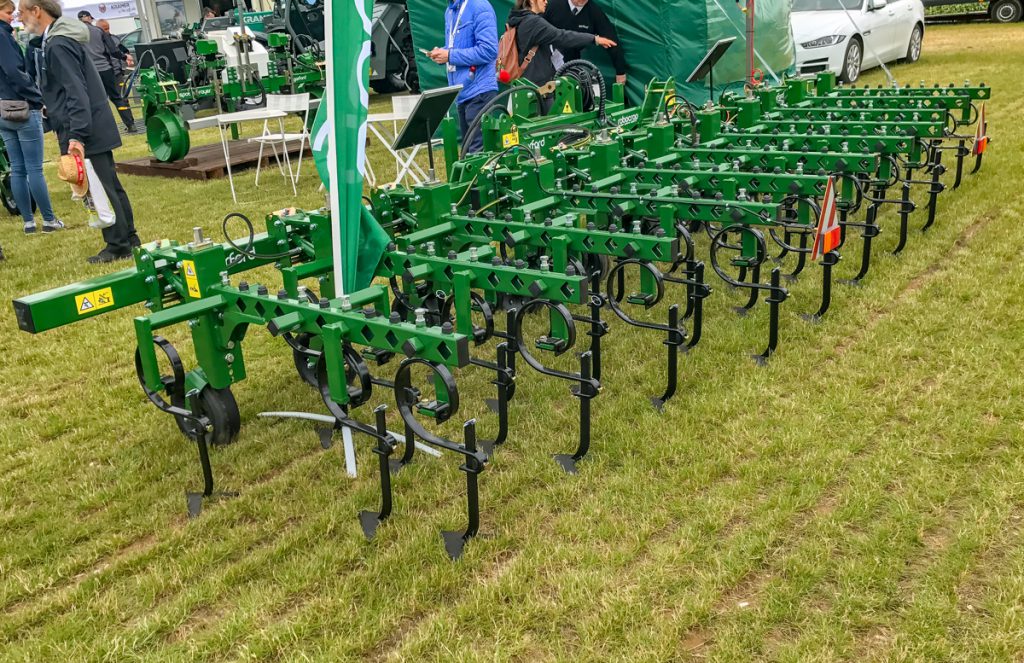Mechanical weeders and robotic weeders were a hot topic of conversation at Cereals 2018, which took place in Cambridge last week.
The interest in these machines is because farmers are now saying that they need something else in their toolbox. Chemical control may be a cheaper option of weed control in many instances, but farmers need a method of control that is reliable into the future.
The challenging weed spectrum and decreasing amount of chemistry available to control weeds are two reasons for this.
Some weeds have developed resistance to certain herbicides, while many forms of chemistry have also been taken off the market.
Mechanical control cannot fall folly to either of these threats.
Mechanical weeders
The Robocrop from Garford Farm Machinery (pictured below) aims to alleviate fatigue in the driver – operating the tractor – by using camera guidance to track a hoe along the crop rows. This guidance can work to a 10mm accuracy.
The Carre mechanical weeder also has camera guidance and can be used in a range of different crops. Farmers are becoming increasingly interested in mechanical weeding of cereal crops.
Cameras are placed above the weeder and guide the machine through the rows.
Robotic weeders
In the vegetable sector, robotic weeders will replace people in fields and green houses to reduce labour. Robotic weeders can be controlled from an iPhone or tablet. Weeders can run off GPS mapping technology and continue to work for 24 hours in all weather.
One weeder being advertised at the Cereals 2018 show – the ANATIS – has two cameras, one at the rear, which steers the hoe, and one at the front to collect data.
https://www.youtube.com/watch?v=0_rA3wkGSm0
Robotic weeders can currently only be used in greenhouses. TRP, the company that imports Carre mechanical and robotic weeders to the UK, expects to have a robotic weeder available for field work by this time next year.




